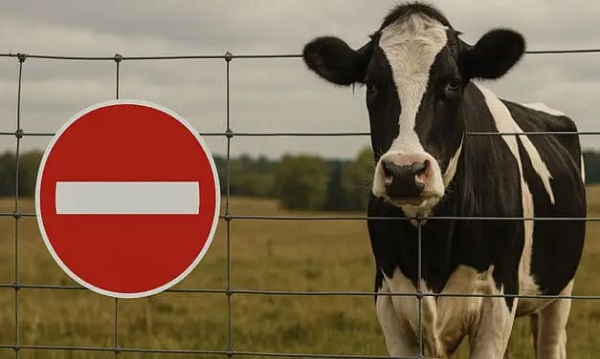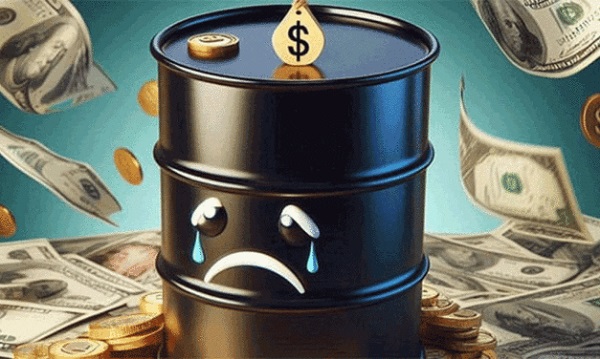National
Judge slams Trudeau, media for false claims about deaths, ‘secret burials’ at residential schools

From LifeSiteNews
‘Canadians are being deliberately deceived’ by the Trudeau government, indigenous leaders, and the media about the ‘obviously false claim’ that residential schools were responsible for ‘deaths and secret burials’ of children, retired Manitoba judge Brian Giesbrecht wrote.
A retired Canadian judge says people are being “deliberately deceived by their own government” after blasting the Liberal federal government of Prime Minister Justin Trudeau for “actively pursuing” a policy that blames the Catholic Church for the unfounded “deaths and secret burials” of indigenous children.
“The Trudeau Liberals have actively pursued a policy that has both encouraged, and then kept alive a conspiracy theory — namely, that residential school priests, nuns and teachers were responsible for the deaths and secret burials of the children placed in their care,” wrote retired Manitoba judge Brian Giesbrecht in a recent opinion piece published in the Western Standard last week.
“The indigenous leadership has exploited an obviously false claim — pocketing a mountain of tax dollars, while our moribund mainstream media sits in silence.”
Giesbrecht was very vocal about criticizing the claims made by the legacy media and Trudeau government that the Catholic Church is complicit in the deaths of thousands of indigenous Canadians who attended government-mandated residential schools.
As a result of the claims, since the spring of 2021, 112 churches, most of them Catholic, many of them on indigenous lands that serve the local population, have been burned to the ground, vandalized, or defiled in Canada.
Giesbrecht wrote that, in his view, the church burnings are only the “outward manifestation of this larger evil” targeting Canadian Christians.
“Canadians are being deliberately deceived by their own government, the indigenous leadership, and our own media,” he wrote.
He observed that the “false” claims made by the government and media have turned the truth “upside down.”
“Lewis Carroll wrote about an upside down world in Alice in Wonderland,” he wrote. “He would immediately understand what is happening in Canada today.”
The church burnings started in 2021 after the mainstream media and the federal government ran with inflammatory and dubious claims that hundreds of children were buried and disregarded by Catholic priests and nuns who ran some of the now-closed residential schools.
Giesbrecht observed that the reality is that historical records “clearly show” that “the children who died of disease or accident while attending residential school were all given Christian burials, with their deaths properly recorded.”
“Most were buried by their families in their home communities. In short, there is no historical evidence that even one residential school student died under sinister circumstances, or was buried in secrecy,” he wrote.
LifeSiteNews earlier reported on how Giesbrecht blasted what he said is a “conspiracy theory” lie and “shocking” yet unproven “accusation” being pushed by Trudeau and legacy media that thousands of indigenous residential school kids died due to negligence by the Catholic priests and nuns.
The judge lamented the fact that hundreds of Christian (mostly Catholic) churches have been burned to the ground since the first TRC report came out in 2010.
LifeSiteNews reported last week that Leah Gazan, backbencher MP from the New Democratic Party, brought forth a new bill that seeks to criminalize the denial of the unproven claim that the residential school system once operating in Canada was a “genocide.”
In August, LifeSiteNews reported that Trudeau’s cabinet said it will expand a multimillion-dollar fund geared toward documenting claims that hundreds of young children died and were clandestinely buried at now-closed residential schools, some of them run by the Catholic Church.
Canadian indigenous residential schools, run by the Catholic Church and other Christian groups, were set up by the federal government and were open from the late 19th century until 1996.
While there were indeed some Catholics who committed serious abuses against native children, the unproved “mass graves” narrative has led to widespread anti-Catholic sentiment since 2021.
Conservative Party of Canada (CPC) MP Jamil Jivani has urged support from his political opponents for a bill that would give stiffer penalties to arsonists caught burning churches down, saying the recent rash of destruction is a “very serious issue” that is a direct “attack” on families as well as “religious freedom in Canada.”
Business
Carney praises Trump’s world ‘leadership’ at G7 meeting in Canada

From LifeSiteNews
Canada’s prime minister said it was a ‘great honor’ to host the U.S. president and praised him for saying Canada wants to work with the U.S. ‘hand-in-hand.’
During the second day of the G7 leaders meeting in the Kananaskis area in Alberta, Canadian Prime Minister Mark Carney praised U.S. President Donald Trump’s world “leadership” despite saying many negative things about him during his election campaign.
While speaking to reporters Monday, Trump hinted that a new trade deal between Canada and the United States was potentially only “weeks” away. This came after a private meeting with Carney before the official G7 talks commenced.
“We’ve developed a very good relationship. And we’re going to be talking about trade and many other things,” Trump told reporters.
Carney was less vocal, however. He used the opportunity to tell reporters he was happy Trump came to his country for the G7 meeting, saying it was a “great honor” to host him.
“This marks the 50th birthday of the G7, and the G7 is nothing without U.S. leadership,” Carney told reporters.
He then spoke about Trump’s “personal leadership” on world issues and praised him for saying Canada wants to work with the U.S. “hand-in-hand.”
Carney ran his election campaign by claiming the Conservative Party would bow to Trump’s demands despite the fact that the party never said such things.
During his federal election campaign, Carney repeatedly took issue with Trump and the U.S. that turned into an anti-American Canadian legacy media frenzy.
However, the reality is, after Carney won the April 28 federal election, Trump praised him, saying, “Canada chose a very talented person.”
Many political pundits have said that Carney owes his win to Trump, as the U.S. president suggested on multiple occasions that he would rather work with Carney than conservative leader Pierre Poilievre.
Trump has routinely suggested that Canada become an American state in recent months, often making such statements while talking about or implementing trade tariffs on Canadian goods.
As for Carney, he has said his government plans to launch a “new economy” in Canada that will involve “deepening” ties to the world.
Business
Carney’s Honeymoon Phase Enters a ‘Make-or-Break’ Week

From the National Citizens Coalition
The National Citizens Coalition (NCC) is sounding the alarm on a critical week for the Carney government, which, despite enjoying an unearned honeymoon in the polls, has delivered zero results for everyday Canadians. As the G7 summit looms large and the House of Commons prepares to adjourn, this is a make-or-break moment for Prime Minister Mark Carney to prove his government is more than empty promises. Canadians are watching, and the NCC is calling out the glaring failures that threaten a grim summer of economic decline, and continued crime, chaos, and rising unemployment.
Housing Minister Gregor Robertson Caught in $10.85 Million Scandal
Recent revelations from Blacklock’s Reporter expose Housing Minister Gregor Robertson’s attempt to conceal $10.85 million in personal property investments during Commons questioning. This shocking lack of transparency from the minister tasked with addressing Canada’s housing crisis raises serious questions about his integrity and ability to prioritize Canadians struggling with skyrocketing costs. While Robertson dodges accountability, and Carney apparently scoffs at providing housing relief to millions suffering under a Liberal-made crisis, young professionals and young families are wondering if they’ll ever have a chance to own a home bigger than Canada’s much-maligned supply of ‘dog-crate condos.’
The NCC demands a full ethics investigation, the resignation of Gregor Robertson — who, as one of the architects of the Vancouver housing crisis, should have never been handed this file to begin with — and immediate action to restore trust in this critical portfolio.
Pipeline Delays and Provincial Obstruction Threaten Economic Growth
The Carney government’s inaction on pipelines is stalling Canada’s economic potential. Despite promises of “nation-building projects,” British Columbia and Quebec continue to block and veto critical energy infrastructure, with Carney failing to assert federal leadership. His vague talk of “consensus” and “decarbonized” barrels has led to zero progress, leaving Alberta’s economy in limbo and Canadians facing higher energy costs. With no clear plan to advance projects, the government is squandering opportunities to create jobs and secure energy sovereignty. The NCC urges Carney to act decisively this week to break the provincial logjam and deliver results.
Immigration Chaos: Lena Diab’s Unchecked Honour System Fails Canadians
Immigration Minister Lena Diab’s reliance on an ‘honour system’ for millions of temporary visitors with expiring visas is a recipe for disaster. As Canada grapples with unsustainable immigration levels, Diab’s apparent plan for millions of temporary workers and failed ‘diploma mill’ attendees assumes compliance without enforcement, ignoring the high-propensity for fraud, and the ongoing and urgent strain on housing, healthcare, and public services. The Liberals’ Strong Borders Act promises reform, but its loaded with unnecessary overreach and vague measures.
A lack of urgency leaves Canadians vulnerable to further crime, chaos, closed emergency rooms, high rents, and failing infrastructure. With immigration continuing to spiral out of control, the NCC calls for concrete action to drastically lower immigration targets, expedite deportations, and prioritize Canadian citizens and the record amounts of unemployed before the House adjourns.
Canadians Deserve Results, Not More Hollow “Elbows up” or “Team Canada” Rhetoric
This week’s G7 summit in Alberta and the impending House adjournment are the Carney government’s last chance to show leadership, before an undeserved summer break for a government that will be overseeing deepening economic decline, rising crime under a refusal to tackle catch-and-release bail, and growing unemployment. Canadians cannot afford another season of unfulfilled promises and unchecked crises. The NCC demands Carney use the G7 platform to secure trade stability, meaningful energy deals with our allies, and table a federal budget to address the cost-of-living crisis made worse by inflationary Liberal spending. Failure to act now will cement an early legacy of inaction and leave Canadians to endure a prolonged period of hardship.
“The Carney government’s honeymoon has been built on hype, not results,” says NCC Director Alexander Brown. “From Gregor Robertson’s hidden millions, to stalled pipelines, to an immigration system in continued disarray, Canadians — and particularly young Canadians — are being let down. This week is Carney’s chance to prove he can deliver beyond the lies that were told to placate a portion of the electorate at the polls. If he fails to act, the economic decline, the crime and chaos, will only worsen, and everyday Canadians will pay the price.
“True Canadian leaders like Alberta Premier Danielle Smith are in attendance at the G7 along with Carney. If actual acts of ‘nation-building,’ and not more net-zero de-growth, do not come naturally to the PM, he should turn to those who have never wavered in their quest to make life more affordable for the hard-working citizens they are privileged to represent, and who know when to get out of the way to allow Canadians to prosper. More of the same internal, ideological sabotage from the Liberals cannot ruin this dire moment for Canada’s rebirth and recovery.”
The NCC calls on all Canadians to hold the Carney government accountable. Join us in demanding transparency, action, and results before the House adjourns and the G7 summit concludes. Together, we can fight for a stronger, more prosperous Canada.
About the National Citizens Coalition: Founded in 1967, the NCC is a non-profit organization dedicated to advocating for individual freedom, lower taxes, less government waste, and a stronger Canada. We hold governments accountable and fight for the interests of everyday Canadians.
-

 Health11 hours ago
Health11 hours agoLast day and last chance to win this dream home! Support the 2025 Red Deer Hospital Lottery before midnight!
-

 Business1 day ago
Business1 day agoCarney’s European pivot could quietly reshape Canada’s sovereignty
-

 Crime2 days ago
Crime2 days agoManhunt on for suspect in shooting deaths of Minnesota House speaker, husband
-

 conflict18 hours ago
conflict18 hours ago“Evacuate”: Netanyahu Warns Tehran as Israel Expands Strikes on Iran’s Military Command
-

 Alberta1 day ago
Alberta1 day agoAlberta’s grand bargain with Canada includes a new pipeline to Prince Rupert
-

 Aristotle Foundation15 hours ago
Aristotle Foundation15 hours agoThe Canadian Medical Association’s inexplicable stance on pediatric gender medicine
-

 Energy17 hours ago
Energy17 hours agoCould the G7 Summit in Alberta be a historic moment for Canadian energy?
-

 Bruce Dowbiggin17 hours ago
Bruce Dowbiggin17 hours agoWOKE NBA Stars Seems Natural For CDN Advertisers. Why Won’t They Bite?




